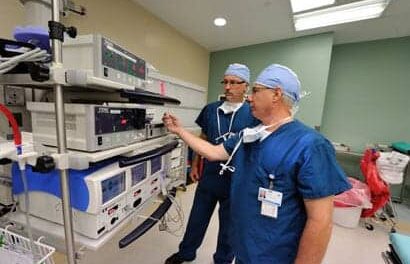The global mechanical ventilator market size was valued at $5.79 billion in 2021 and is expected to expand at a compound annual growth rate (CAGR) of 4.8% from 2022 to 2030.
COVID boosted the demand for mechanical ventilators by leaps and bounds in 2020, according to Grand View Research. The intuitive measures adopted by the government and the manufacturers to curb the initial unpreparedness for the pandemic resulted in the inflow of mechanical ventilators at the expedited rate.
However, owing to the development of the COVID vaccine, coupled with effective therapeutic options to treat mild to moderate symptoms of the infection, the growth has been stabilized. In addition, there is an expected decrease in the infection rate of coronavirus due to high awareness amongst the population and adherence to physical distancing measures.
Also, the U.S. FDA temporarily waived off its enforcement and inspection requirements, which would be helpful for cross-industry manufacturers to fabricate much-needed components for ventilators and other critical care equipment. Supportive and timely regulatory policies by the government are anticipated to provide a growth platform for this market in the coming financial year, thereby affecting the growth rate over the forecast years.
A rise in the incidence of Chronic Obstructive Pulmonary Disease (COPD), rapid growth in the elderly population, and technological innovation are major factors likely to drive the market over the forecast period. The evolution of patient-friendly, cost-effective, and portable devices can further encourage their usage.
According to the WHO, COPD is the third leading cause of death globally, causing 3.23 million deaths in 2019. In November 2020, Philips introduced Ventilator BiPAP A40 Expiratory Flow Limitation (EFL), a noninvasive ventilator for COPD patients. With this, clinicians can detect EFL in hypercapnic COPD patients at the point of care, ensuring the delivery of optimal homecare therapy. Increased demand for home healthcare is anticipated to have a favorable impact on the demand for home care ventilators in the coming years.
The pandemic has been advantageous for the market and it rendered a positive impact on the market growth. The requirement for ventilation facilities by the COVID outbreak quickly improved day-to-day operational capabilities. The American Association for Respiratory Care joined forces with the different organizations to train respiratory therapists on operating ventilators during COVID-19. This has further stimulated the market players to increase their production capacities to meet the augmented demand.
Many manufacturers were flooded with orders during the pandemic. In March 2020, Philips announced that it ramped up the production of critical care products and solutions to support the diagnosis and treatment of patients with COVID-19. The company also increased the production of patient vital signs monitors and portable ventilators and consumables for invasive and noninvasive ventilation to treat a wide range of breathing conditions.




